As the summer temperatures subside, it’s common for gardens to lose their vibrancy and enthusiasm. Faded flowers, unruly weeds, and mildew on ornamentals can all contribute to a dull and uninspiring garden. Fortunately, fall is an excellent season to breathe new life into your outdoor space by planting fresh flowers and giving it the boost it needs.
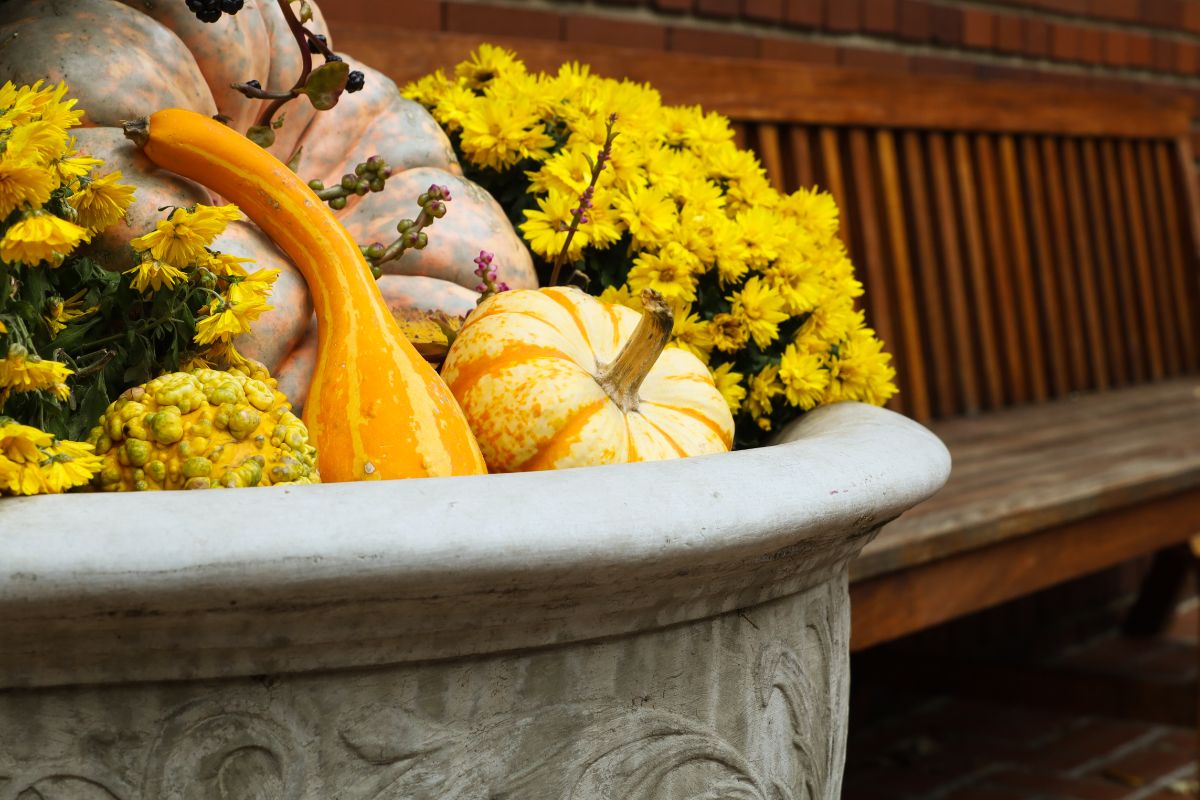
Summer may be over, but gardening doesn’t have to end! If you’re looking to add some color and refresh your outdoor space, consider planting mums or asters in your flower beds or containers. However, don’t stop there. Fall’s cooler temperatures make it the ideal time to plant bulbs and ornamental flowering bushes as well. So, grab your gardening tools and get ready to spruce up your yard for the autumn season!

Fall planting offers a wide range of options that you may not have considered. In this article, we’ll introduce our top picks for fall flowers and share some tips on how to ensure they bloom successfully. Don’t put away your gardening tools just yet – there’s still plenty to do in the fall!
To determine which flowers are best for your fall planting, consider your goals. Do you want to enjoy bright fall blooms now, or are you planning ahead for next season with spring-blooming bulbs and perennials? Based on your answer, you can choose whether to focus on fall-blooming flowers or opt for slower growing perennials and bulbs that are ideal for autumn planting.
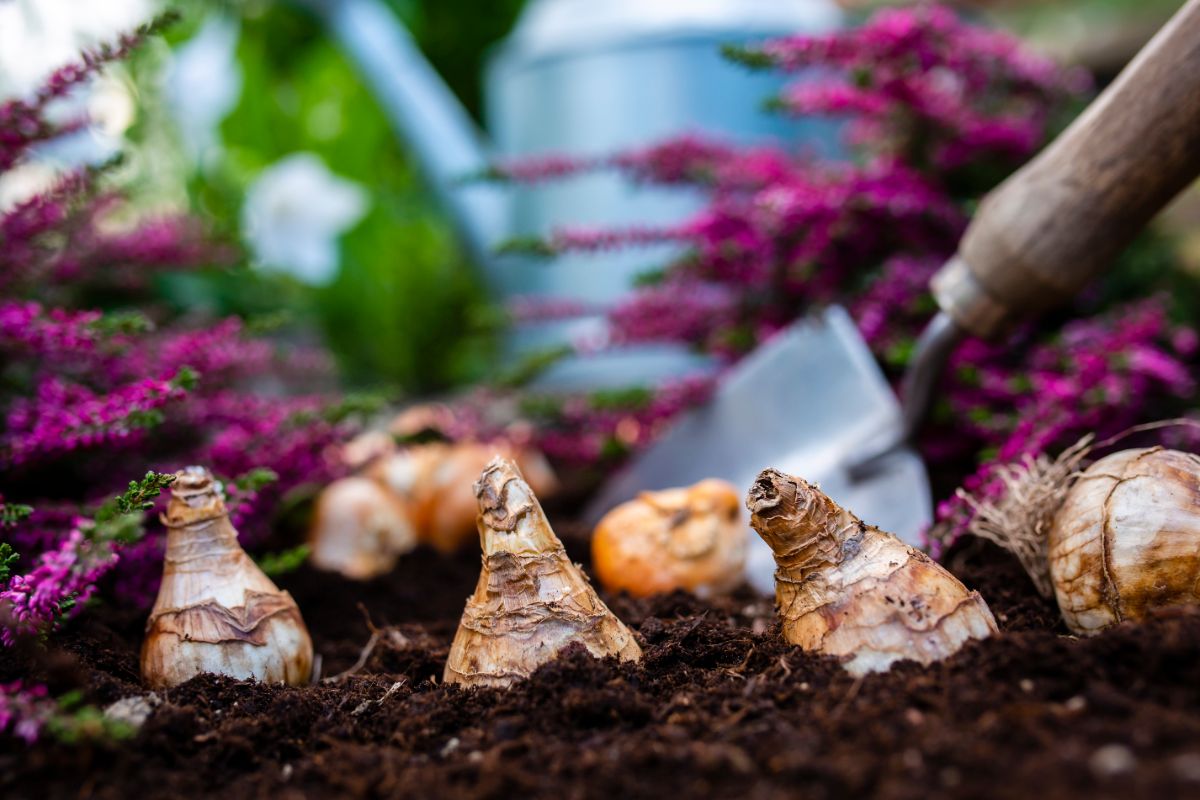
There are two types of fall planting, one for flowers that will bloom in the fall and another for those that will blossom in the spring. Fall gardens provide an opportunity to experiment with warm-colored flowers such as purple, orange, and yellow. Chrysanthemums, nasturtiums, and asters are great options for seasonal planting arrangements, while perennials that can withstand winter are excellent choices. Moreover, autumn is also a perfect time to explore new ideas by incorporating short-season annuals into your garden.
If you want to create a more permanent planting arrangement and garden beds, fall is the best time to do so. With spring garden preparation and summer weeding taking up much of your time, it can be challenging to plan future changes for your garden during the warmer months. However, once garden activities begin to slow down in autumn, you’ll have ample breathing space to develop your garden designs. You can use this time to explore new planting arrangements, add new specimens, or even draw up new garden bed layouts.
Fall is not just peaceful, but it’s also ideal for planting because of the cooler temperatures. The autumn season is perfect for planting spring-blooming bulbs and some perennial shrubs. If you plant them at the correct time in autumn, these new plants will have enough time to develop roots and establish themselves before winter sets in. This way, when autumn-sown bulbs like crocuses start to bloom in the spring, you’ll already have a head start in your garden.
In conclusion, fall offers a great opportunity for gardening enthusiasts to experiment with different planting arrangements, try out new ideas, and create a more permanent planting arrangement and garden beds. To get started, here are the top 21 flower options for fall planting.
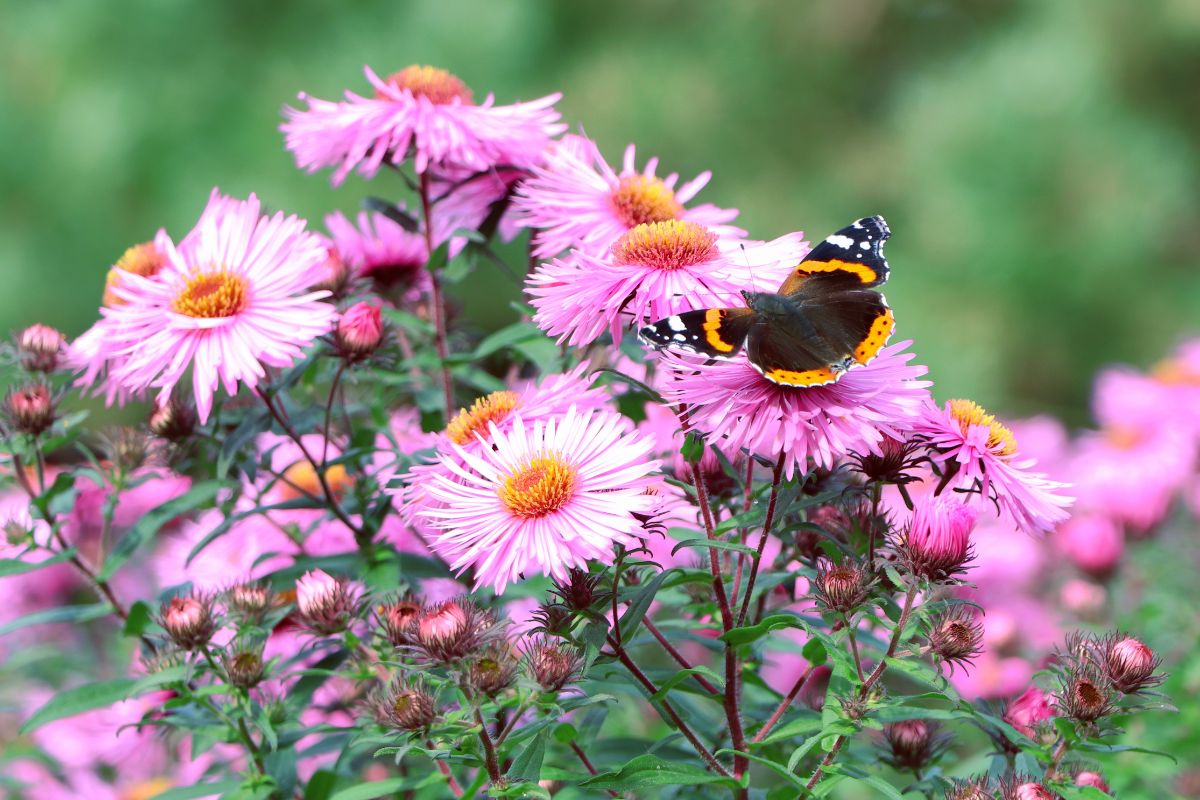
If you’re not ready to give up your gardening tools just yet, fear not! You can still plant several types of plants that yield beautiful autumn and spring blooms. With so many options to choose from, you can opt for annuals that bloom for a short period but offer a colorful display in containers. Alternatively, you can invest in spring-blooming bulbs that fare best when planted during autumn. If you prefer plants that last longer, perennials are suitable for cool and damp autumn soil, and they’re less likely to experience transplant shock. While there are many flower choices, we’ve listed some of our favorites below to inspire you. Note that this list isn’t exhaustive but will set you on the right path. Let’s begin with number one: crocus.
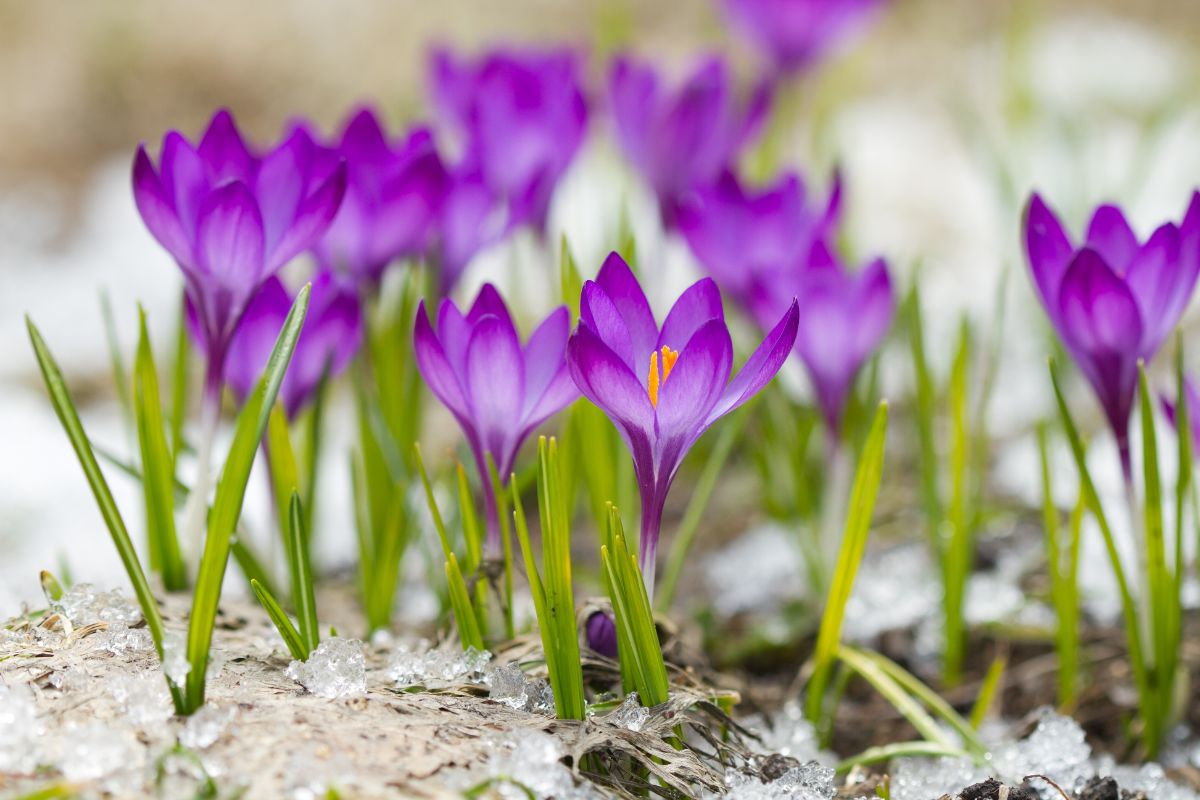
If you want to enjoy early spring blooms, consider planting crocuses in the fall. This delightful plant type is known for its charming cup-shaped flowers that come in a variety of colors, including blue, white, yellow, orange, and purple. As one of the first plants to bloom after winter, crocuses can add a splash of color to your garden and make it look like spring has arrived.
Growing crocuses is super easy, and they are among the most popular bulbs to plant in autumn. They thrive in full sun to partial shade, and you should plant them about 6 to 8 weeks before hard frost begins. To make colors stand out better in your landscape, try planting clumps of bulbs together in groups of 3 to 9 plants per planting hole.
For a unique twist, consider planting saffron or autumn crocus (Crocus sativus). These crocuses are the source of the spice saffron, which has been cultivated since ancient Rome and is used in dishes like paella. You can harvest and dry the red stigmas of this crocus variety for culinary use.
Another plant to consider for your garden is the tulip. With their bold, vibrant blooms, tulips are an excellent choice for adding color to your landscape. They are easy to grow and come in a variety of colors, including red, pink, yellow, and white. Plant tulip bulbs in the fall, about 6 to 8 weeks before the first hard frost date. Tulips also prefer full sun to partial shade and moderate watering. With a minimum grow zone of Zone 3, most varieties of tulips can withstand cold winters.
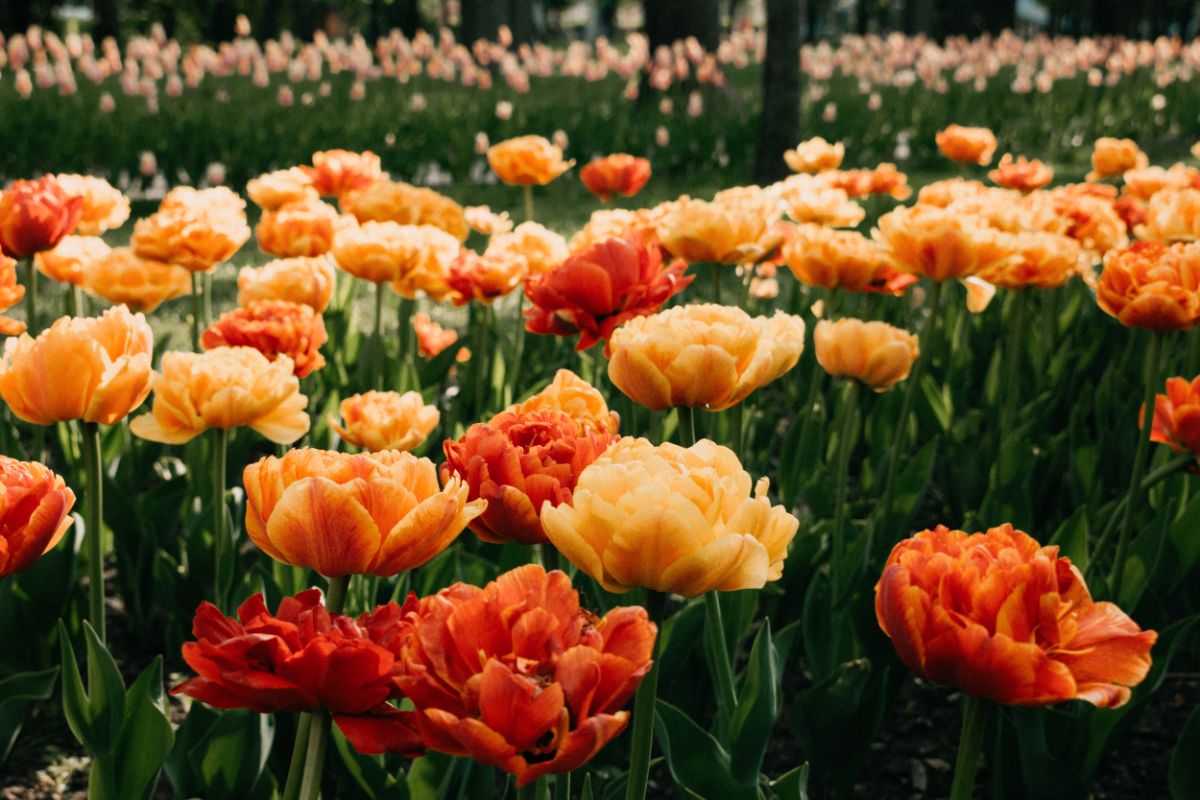
When it comes to planting spring-blooming bulbs, tulips are a popular choice due to their various types, colors, and shapes. To grow these beauties, plant them 6-8 weeks before the first frost date in full sun and with low to moderate watering. They are suitable for Zone 3 minimum grow zone and are best planted in the fall when the soil temperature has cooled off. You can expect bright and vibrant blooms ranging from red to black colors. Tulips can be used for homemade cut flower arrangements, making them perfect for crafty individuals. Keep in mind that while tulips are often perennials, they may not regrow every year, so planting them in a well-draining, sunny location and sowing bulbs 4 to 6 inches deep is crucial. It’s also essential to cut back foliage after blooming and apply fertilizer once a year in autumn to provide your plants with a nutrient boost. Another popular bulb to consider is the hyacinth.
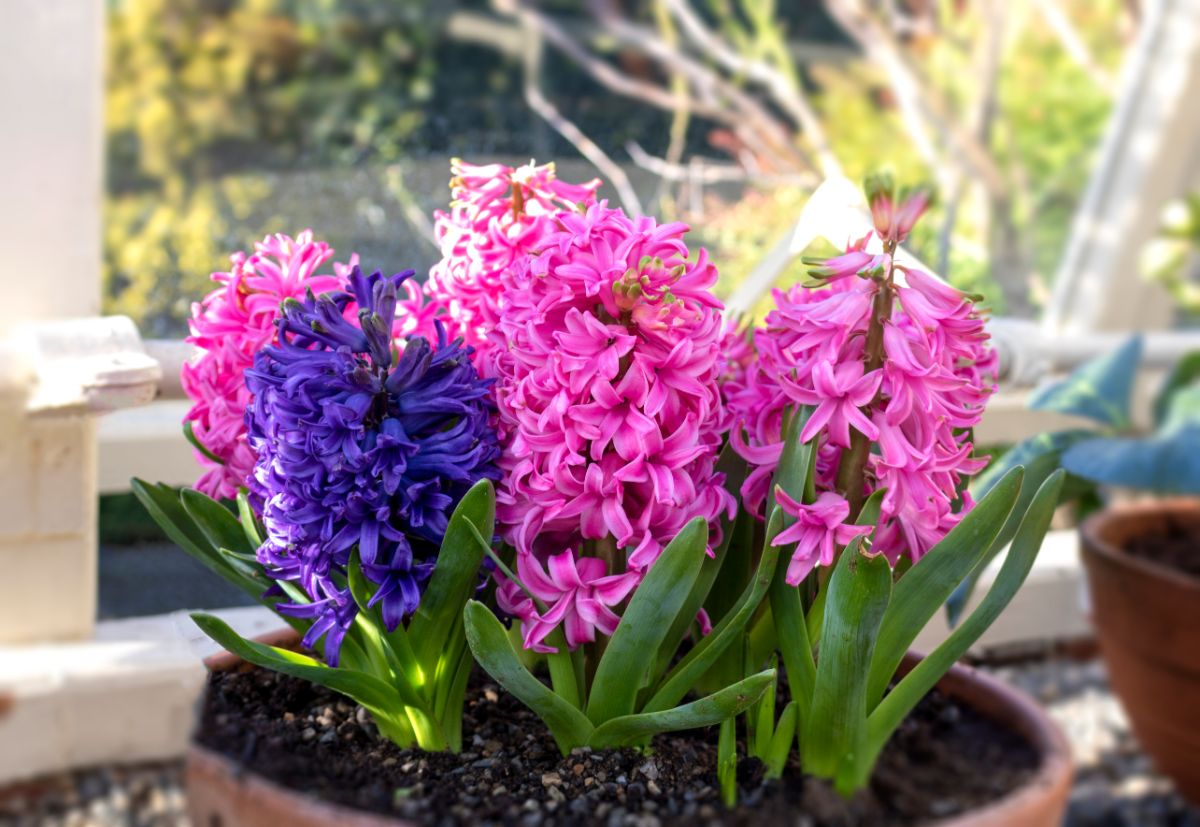
In spring, there’s nothing quite like the lovely fragrance of hyacinths! These bulb plants are perfect for those who love strong floral scents and are a great addition to any garden or outdoor space. To grow hyacinths, make sure to plant them after the first frost but before the ground freezes in mid- to late fall. They thrive in full sun to part shade locations and require moderate watering. Hyacinths bloom a single, bright-colored flower per stalk in shades of pink, purple, white, apricot, blue, and red. For an added pop of color and contrast, try interplanting them with daffodil bulbs. So why not add some hyacinths to your garden and enjoy their sweet fragrance come springtime?
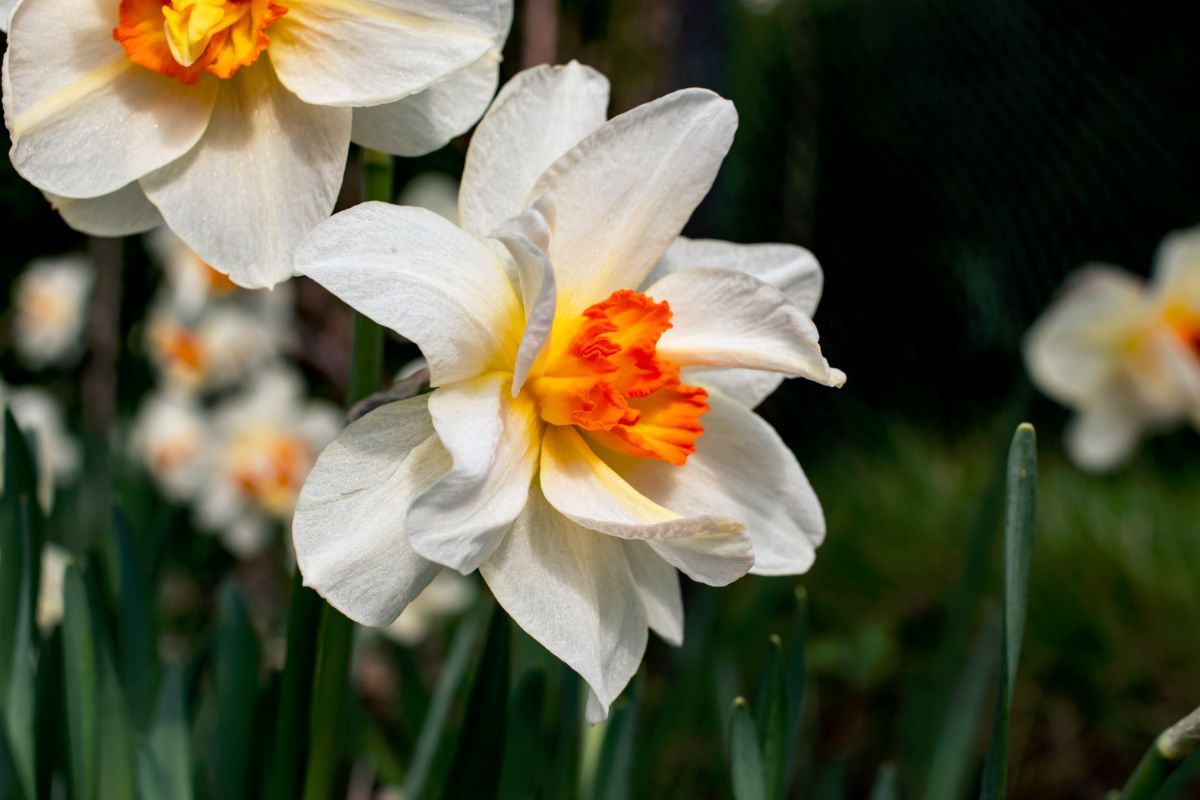
Daffodils, a beloved spring flower from the Narcissus family, are best planted in the autumn season. These easy-to-care-for plants grow from bulbs and are known to bloom reliably in spring with minimal effort. Along with the classic yellow daffodils, you can find members of the Narcissus family in white and orange shades. If you prefer smaller delicate flowers, paperwhites and jonquils are excellent options. The ideal time to plant the bulbs is between September and November, allowing enough time for the plants to establish themselves and store up energy for the spring blooming season. Generally, these plants flower in late winter to early spring, around Easter time. Daffodils are great for cut flower arrangements, so consider planting them in clusters to make a maximum impact in your garden.
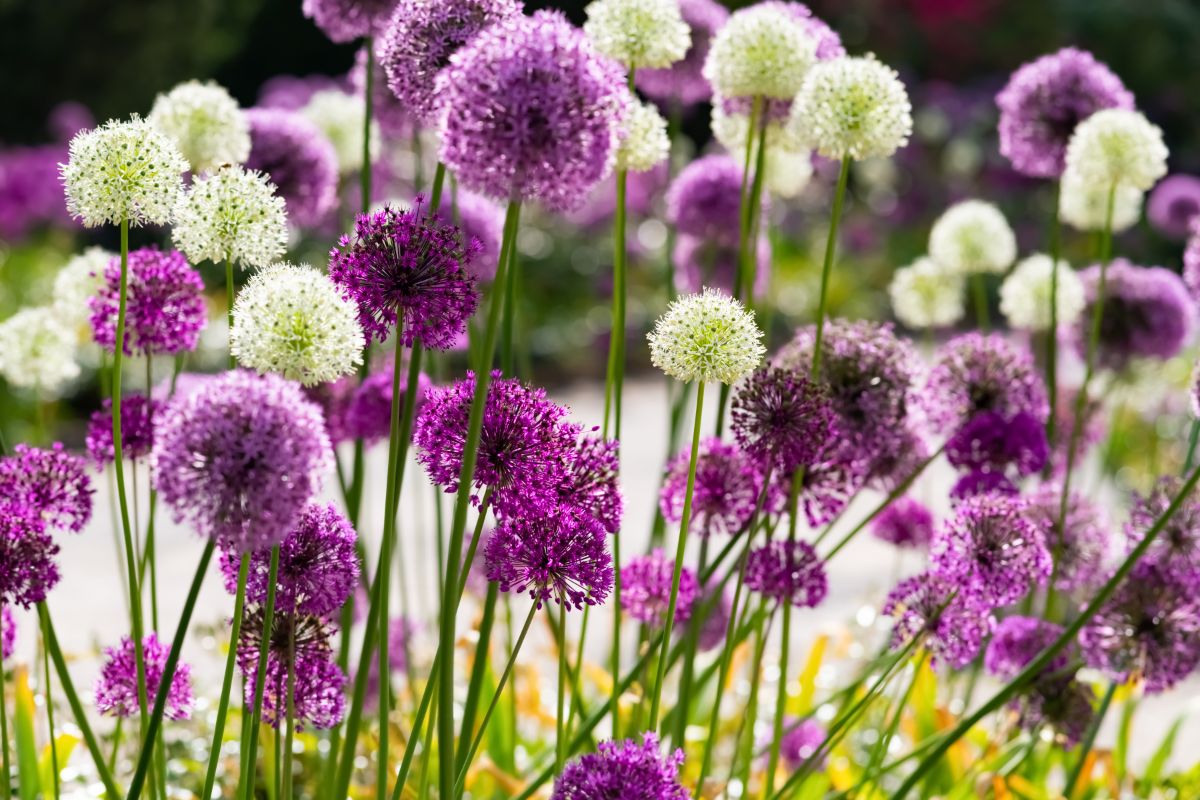
Alliums are a resilient plant that pollinators adore. These plants are typically planted as spring blooming bulbs in the mid to late autumn before the ground freezes. Alliums thrive in full sun to part shade and require moderate watering. They can grow in minimum grow zones of zone 3. If you’re looking for an unconventional flower to add to your landscape, consider alliums. Their unique globe-shaped flowers on slender stems make for an eye-catching addition to garden beds and containers. Alliums bloom in early summer and have long-lasting flowers that stay vibrant for about three weeks. While their most common color is purple, they also come in white, yellow, pink, and blue. Some allium varieties have a lower growth habit, making them perfect for planting in the front of garden beds. As alliums are closely related to garlic and onions, they naturally repel pests and can be planted near other ornamentals, such as roses, to keep harmful insects at bay. Peonies are another great option to consider for your garden.

By planting fall bulbs and plants, you can ensure a stunning display of flowers come springtime. One such plant to consider is the peony. Available as nursery starts or bulbs, these plants require planting six weeks before the first frost date. Peonies thrive in full sun and moderate watering conditions, and are best suited for grow zones 3 and up. With their large, fragrant flowers in a variety of colors, peonies are a great addition to any garden. To ensure proper growth, peonies require staking or cages to prevent spreading and drooping, as well as regular pruning to prevent diseases like powdery mildew. Another option for fall planting are lilies, which can add a pop of color to your garden with their vibrant blooms.
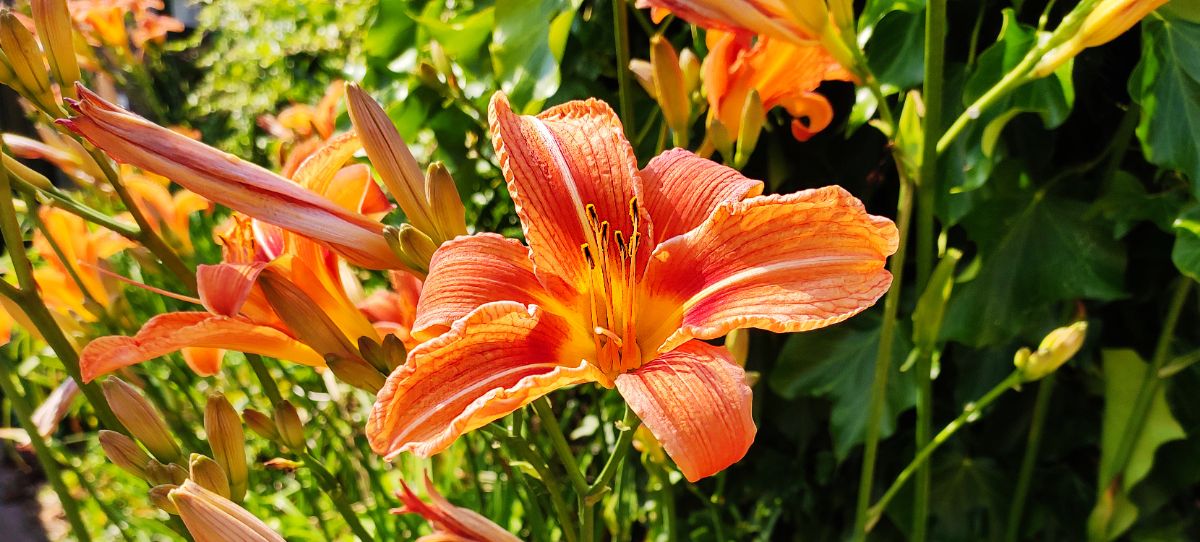
The optimal time to plant this beloved summer flower is during the fall season. Lilies come in over 90 different species, including popular ones like Easter lilies, tiger lilies, and daylilies. They can thrive in a variety of conditions, with some like daylilies even being able to grow in shady areas. To ensure successful growth, lily bulbs should be planted about four weeks before the first frost date. It’s also important to note that these low maintenance plants tend to spread and multiply quickly, so dividing them every three to four years is recommended. However, if you’re a cat owner, it’s important to keep in mind that lilies are toxic to felines. Another beautiful flower to consider planting is bluebells.
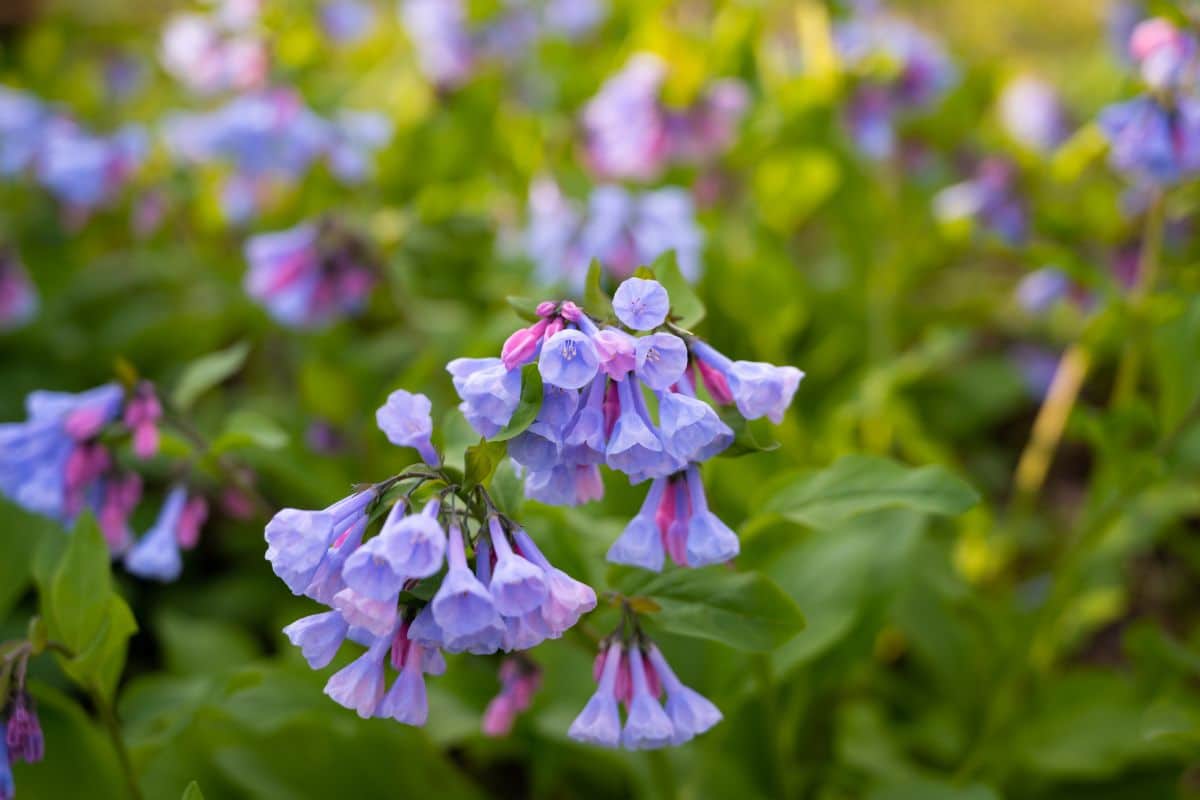
If you’re looking for a stunning flower to brighten up your garden in the spring, consider planting bluebells. Unlike more popular flowers like peonies, bluebells are delicate and unique, with blue bell-shaped blooms that grow in clusters on slender stems. There are six common varieties, including some that change color as they mature. To grow bluebells, plant bulbs in the fall before the ground freezes. Aim for a planting depth of 4 to 8 inches and choose a spot that gets full to partial shade. With moderate watering and a minimum grow zone of Zone 4, you’ll see these beautiful flowers start to blossom in March to May. Another great option to add to your garden is grape hyacinth.
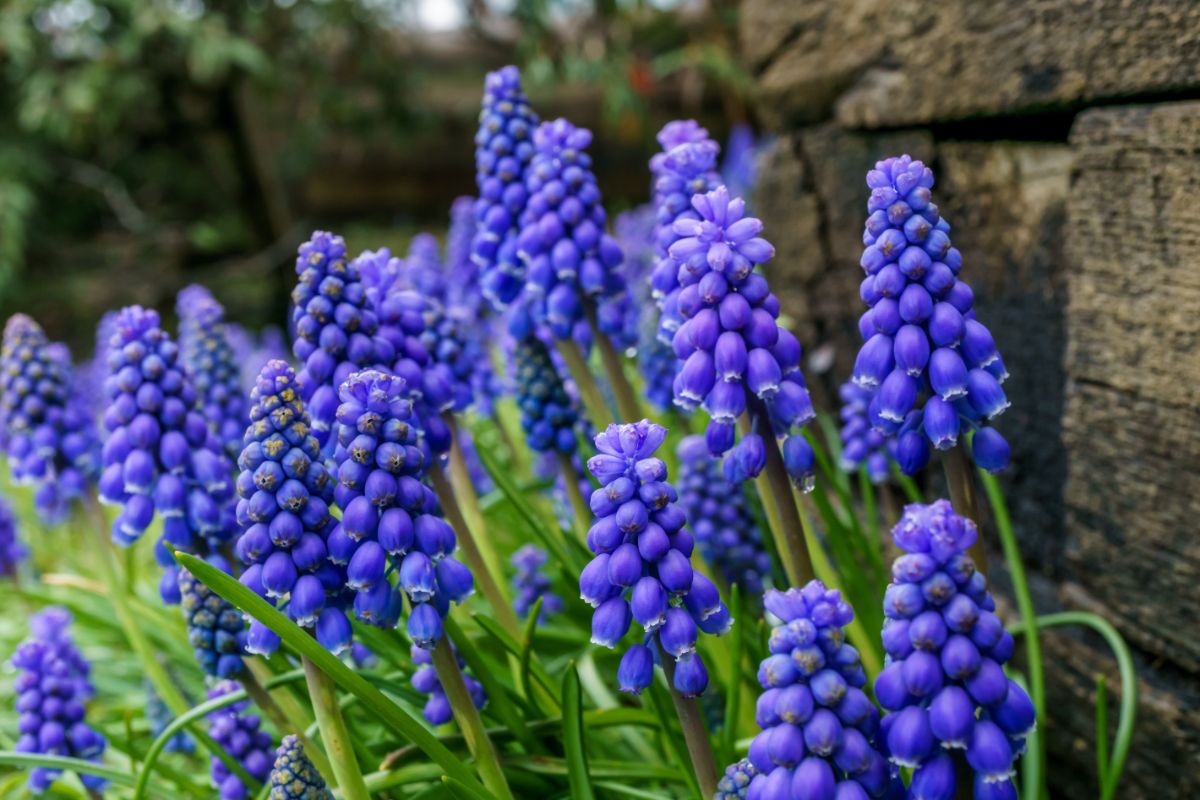
The versatile grape hyacinth is a great addition to any garden and can thrive in a variety of lighting conditions. As a spring blooming bulb, it should be planted in the mid to late autumn before the ground freezes. It requires moderate watering and can grow in full sun or partial shade in Zone 3 and above. Despite its name, the grape hyacinth is not related to the common garden hyacinth but produces delicate purple flowers that resemble clusters of grapes. The low-growing plant can even be used as a colorful ground covering. The long-lasting flowers can bloom for up to three weeks from April to May, making it a great choice for a cluster planting to add a pop of purple to your garden. Another great spring flower option is the Lily of the Valley.
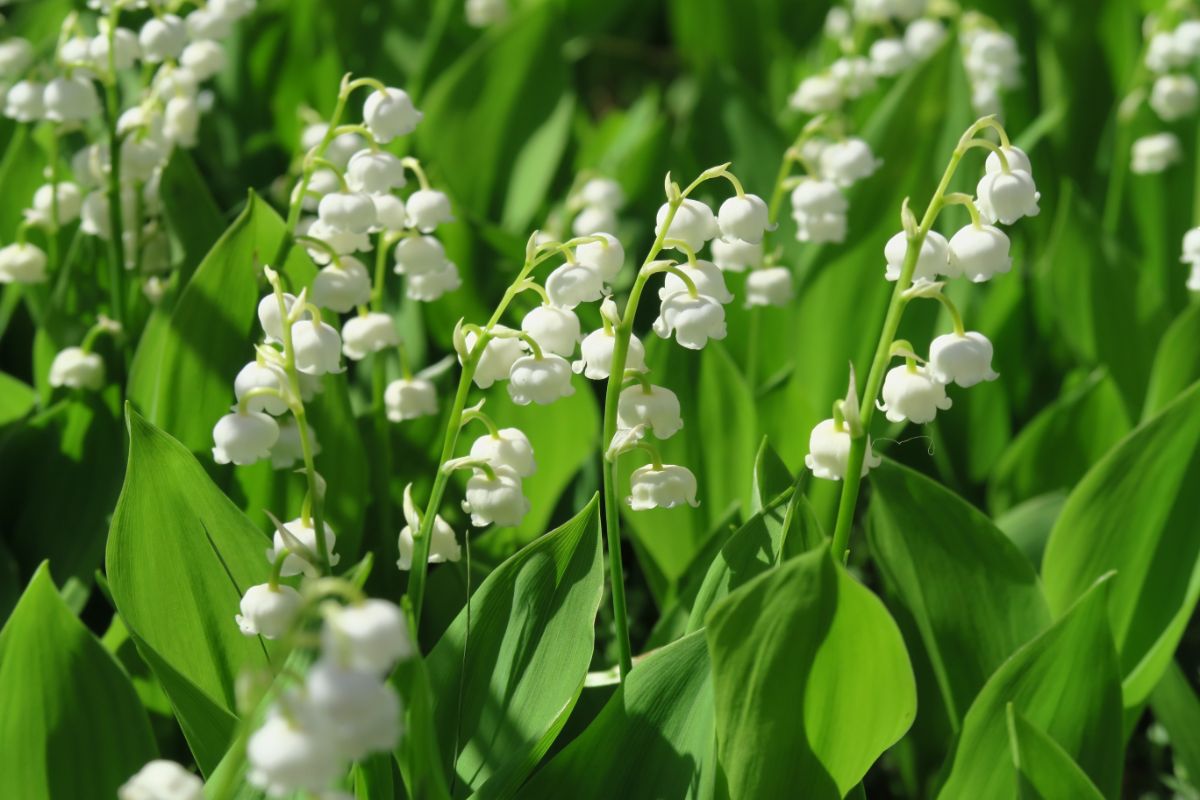
The Lily of the Valley has an unparalleled fragrance that is truly captivating. It falls under the category of spring blooming bulbs and should be planted in the mid- to late autumn period, preferably before the ground freezes. The plant thrives in partial sun to full shade and requires low to moderate watering. It is semi-drought tolerant when it has been correctly established and can only survive in grow zones 3 or higher.
These plants are perfect for ground cover as they have a low growth habit and form dense mats, which look quite attractive. Unlike other ground covers, the Lily of the Valley produces pretty, white flowers that give off a lovely floral scent. This plant is native to both Asia and North America and does well in shady areas, making it a great option for yards with limited sunlight.
To grow the Lily of the Valley, you need to plant bulbs during late fall as they require cold temperatures for proper growth. In spring, your bulbs will start sprouting bell-shaped flowers that will last for several weeks before transitioning into colorful berries. Another plant that goes perfectly well with it is Snowdrops.
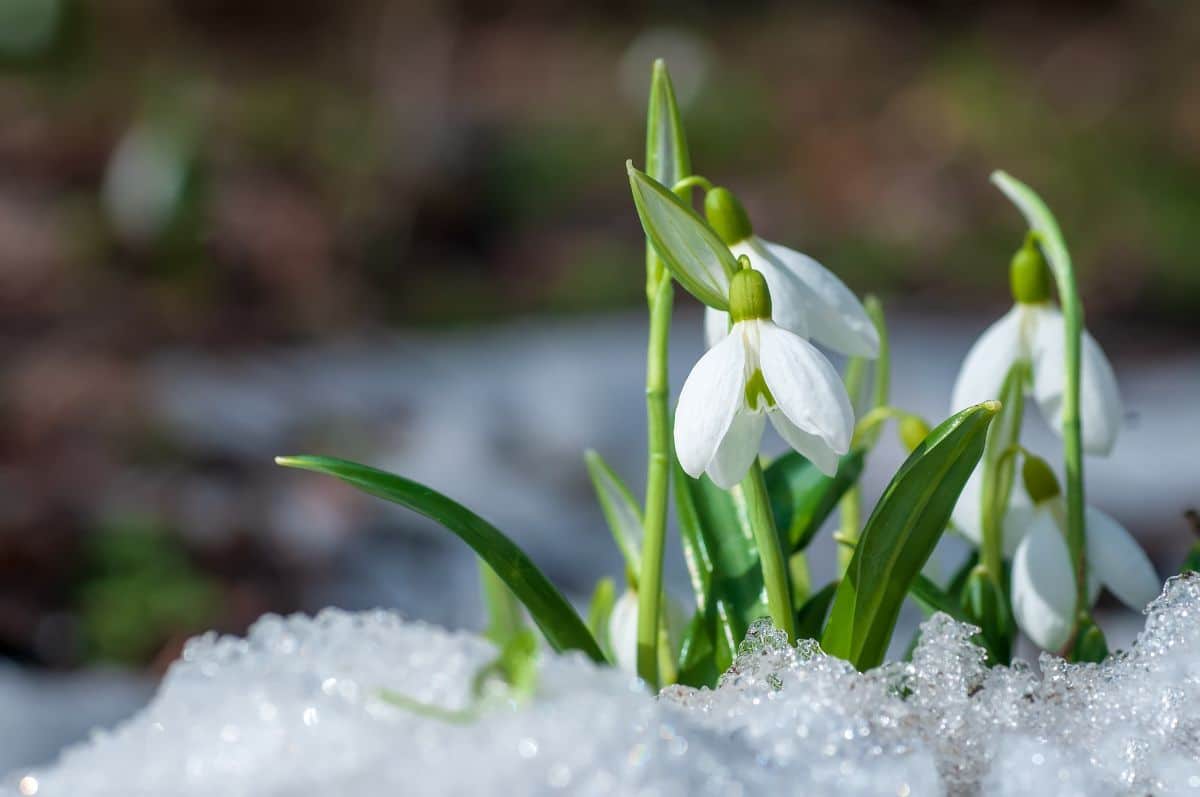
Snowdrops are incredibly resilient and have the ability to sprout even in snowy conditions, often as early as February. They fall under the plant type of spring blooming bulbs and require planting in the early autumn. Snowdrops thrive best under full sun and require moderate watering. With a minimum grow zone of zone 3, snowdrops are a great choice for those eagerly awaiting the arrival of spring every year. These early bloomers serve as a vital source of nectar and pollen for insects and pollinators during the cooler months, making them a valuable addition to any pollinator garden. Though native to Europe and the Middle East, snowdrops are widely planted in gardens across North America. Another beautiful flower to consider adding to your garden is anemones.

Anemones are a type of hardy perennial that resembles poppies and cosmos. If you want to grow anemones, plant them as spring blooming bulbs in the mid- to late autumn, before the ground freezes. The amount of lighting required depends on the variety, while moderate watering is recommended. Anemones thrive in Grow Zone 3. With their delicate form and colorful blooms, anemones make an excellent addition to any flower bed. The plant comes in white, blue, red or yellow and has a highly contrasting dark center. You can enjoy their blooms from spring until fall by planting the bulbs before October. As perennials, anemones can form wonderful groundcovers or borders in your yard. They can grow up to 1 to 3 feet tall and adapt well to full sun and partial shade. Lastly, if you’re looking to add more variety to your garden, consider Fritillaria as another option.

Are you searching for a distinctive and eye-catching flower to add to your spring garden? Consider planting Fritillaria. These bulbs bloom in the spring and are easy to grow, making them a great choice for novice gardeners. They prefer well-drained soil and thrive in full to partial sunlight. Fritillaria comes in a variety of colors and some species have intricate and striking patterns on their petals. They are a member of the lily family and are perennials, so you can enjoy them year after year. Popular types of Fritillaria include Fritillaria meleagris and Fritillaria imperialis. Impress your neighbors with this unique and beautiful addition to your garden.
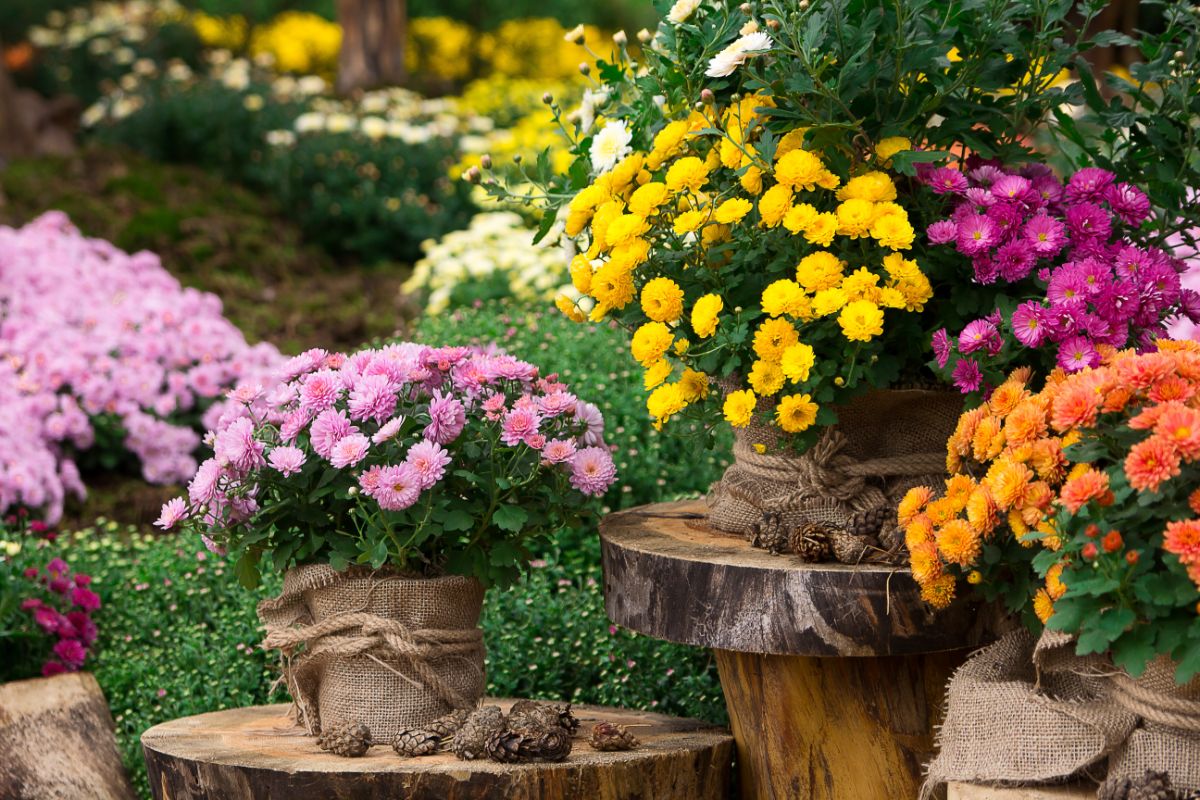
Fall is the season for mums, as they bring a burst of color to any garden or container. These plants, also called chrysanthemums, are native to Asia and northern Europe and are easy to care for. They thrive in full sun to part shade and require consistent watering. Most commonly sold as mature plants, mums can be used as annuals or perennials depending on the variety. Hardy mums can grow as perennials in zone 5 and above, while others are best kept as annuals. Don’t forget to add these colorful blooms to your fall garden!
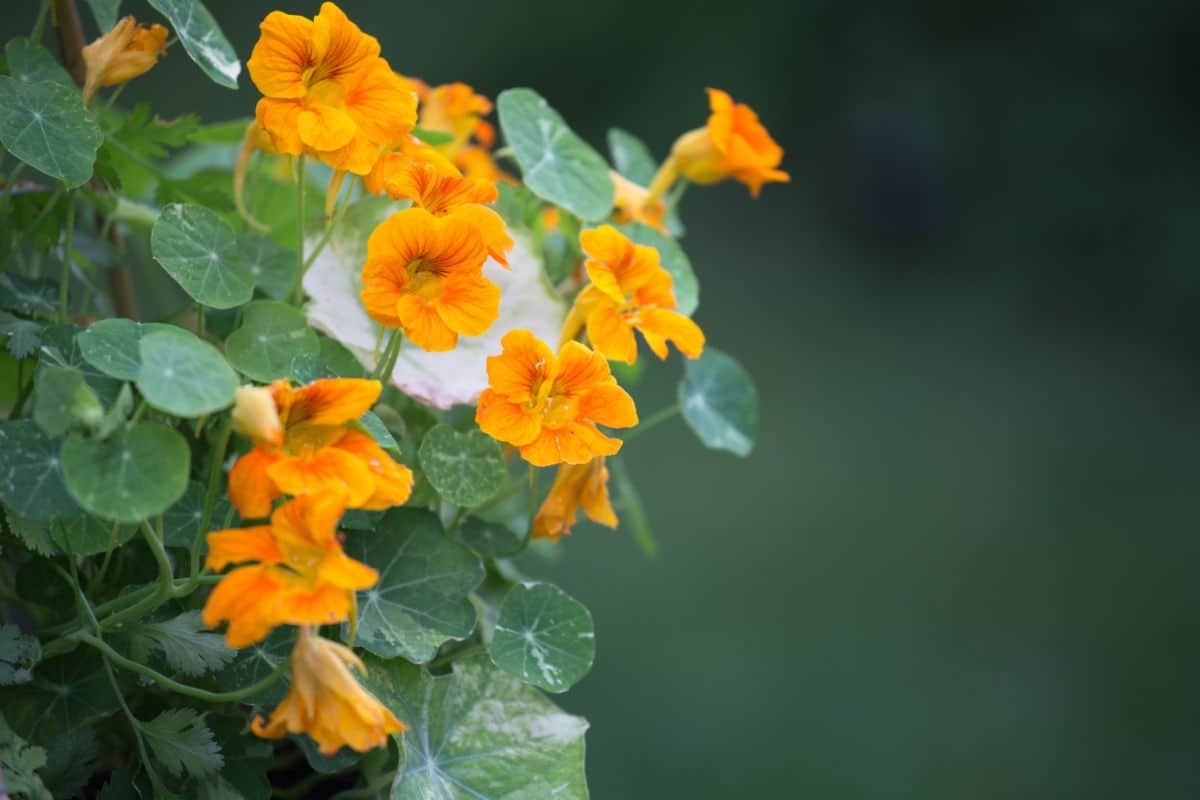
Pansies are a charming option for fall planting with their delicate, colorful blooms.
Plant Type:
Pansy
How to Grow:
Nursery starts, Seeds. Start seeds in late summer for fall flowers.
Lighting:
Full sun to partial shade
Water:
Moderate
Minimum Grow Zone:
Annual or perennial depending on variety
Pansies are beloved for their cheerful faces and come in a wide range of colors, from deep purples to bright yellows. These delicate flowers are great for in-ground beds, but really stand out when planted in pots or hanging baskets.
Growing pansies is easy, whether you start with nursery starts or seeds. For fall blooms, start seeds in late summer and they will begin to flower in about 10 to 12 weeks. Pansies prefer full sun to partial shade and moderate watering.
One fun fact about pansies is that they are edible and can be used as a colorful garnish for salads or desserts. They have a mild, slightly sweet flavor that pairs well with many dishes. So not only do they add beauty to your garden, but they also provide a delicious and decorative touch to your meals.
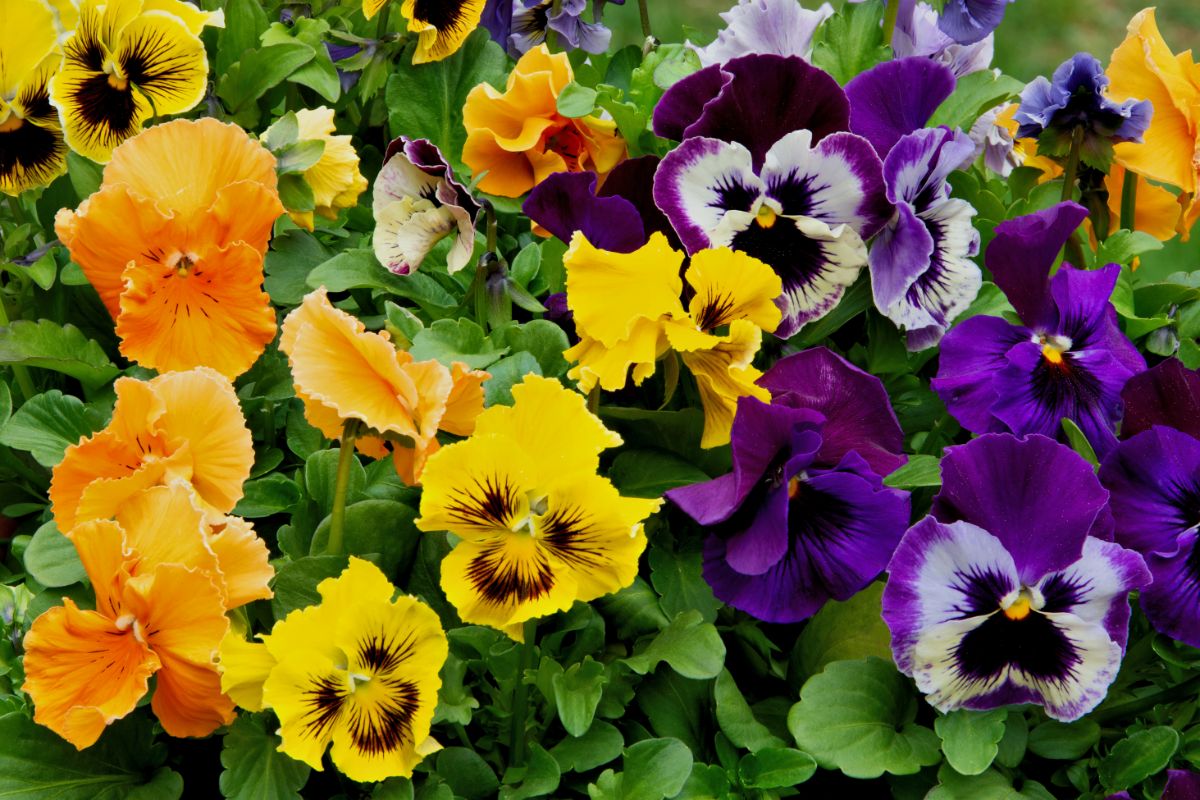
Combine fall mums and nasturtiums with pansies to create stunning autumn arrangements that will brighten up any garden. Pansies are versatile little flowers that can be grown as border plants or in containers. They are cold-hardy and can even survive short periods of sub-freezing temperatures, although they may lose a few blooms. If you find frost damage on your pansies, just remove the damaged flowers and your plants will likely bounce back. Pansies come in an array of colors and can be easily found as nursery starts from spring to fall. Alternatively, if you opt to grow your pansies from seed, keep in mind that it may take up to 12 weeks for them to bloom. Minimum grow zone for pansies is Zone 6. Lastly, don’t forget to include Goldenrod in your fall garden for an impressive display of yellow flowers.
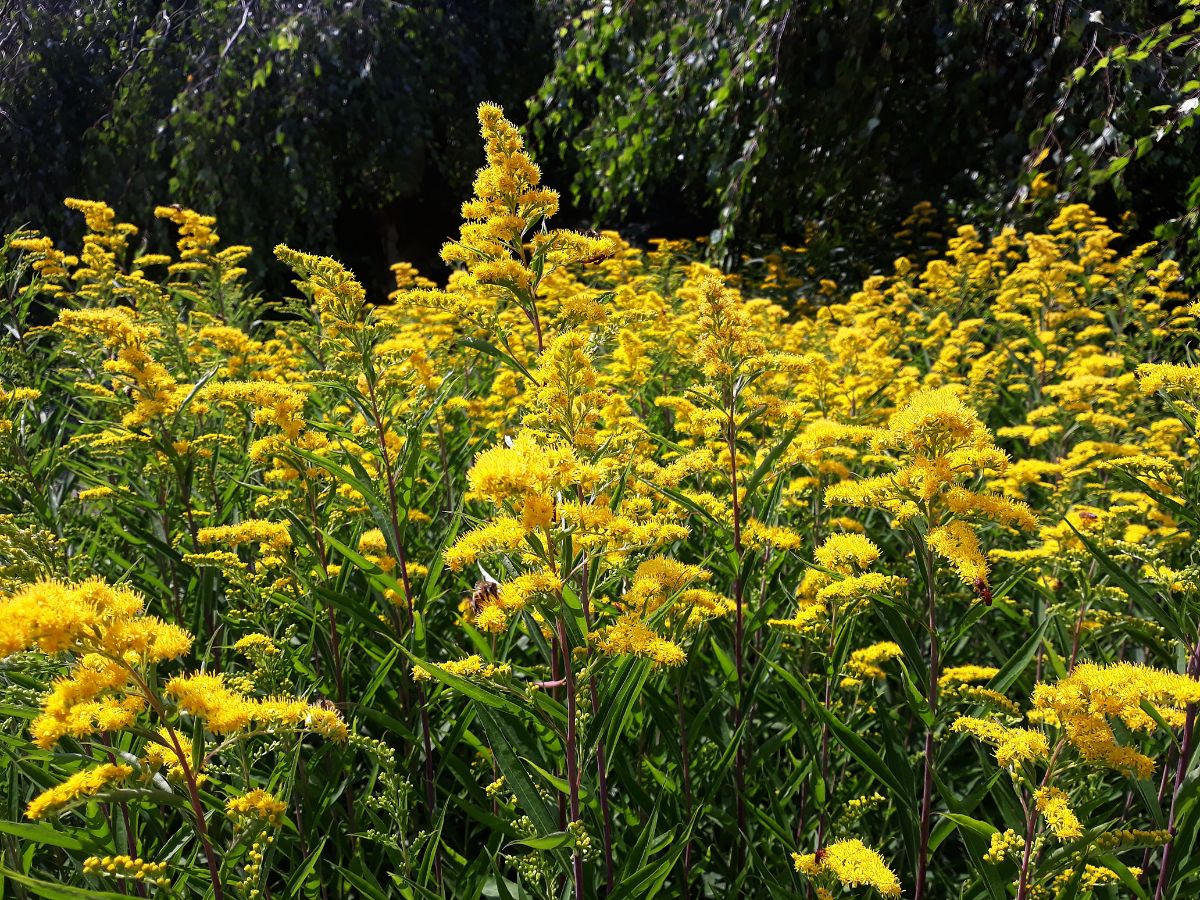
Goldenrod, a beautiful and vibrant yellow flowering plant indigenous to North America, has been wrongly accused of being an allergen. It is a crucial source of nourishment for honeybees during fall season, enabling them to prepare for winter. The plant can be grown from nursery starts and requires low to moderate watering, becoming semi-drought tolerant once established. It can thrive in full sun to partial shade and is suited for growing in Zone 2 and above. With over 100 species of goldenrod, these perennials typically grow up to 3 to 4 feet tall and are highly resilient. They add a warm and inviting hue to autumn gardens while offering essential nectar and pollen to pollinators preparing for migration and hibernation.

Adding Aster to Your Garden for a Burst of Color and Pollinator Activity
If you want to add some vibrant and hardy fall-blooming flowers to your garden, Aster is a must-have. This plant comes in over 170 varieties, ranging in height from 1 to 6 feet. Its daisy-like blooms are available in a wide range of colors, but purple is the most common one.
Asters can be grown in both the ground and containers, and they look especially stunning when combined with goldenrods. Moreover, asters are a favorite among bees and other pollinators, making them an excellent choice for autumn bloomers that attract wildlife to your garden.
To successfully grow asters, start with nursery starts and ensure they receive full sun or part shade, moderate watering, and rich, well-draining soil. Keep in mind that these plants are sensitive to both too much and too little water, and may suffer from root rot if the soil is waterlogged.
With its myriad of colors, easy-to-grow nature, and ability to attract pollinators, Aster is a fantastic addition to any garden.
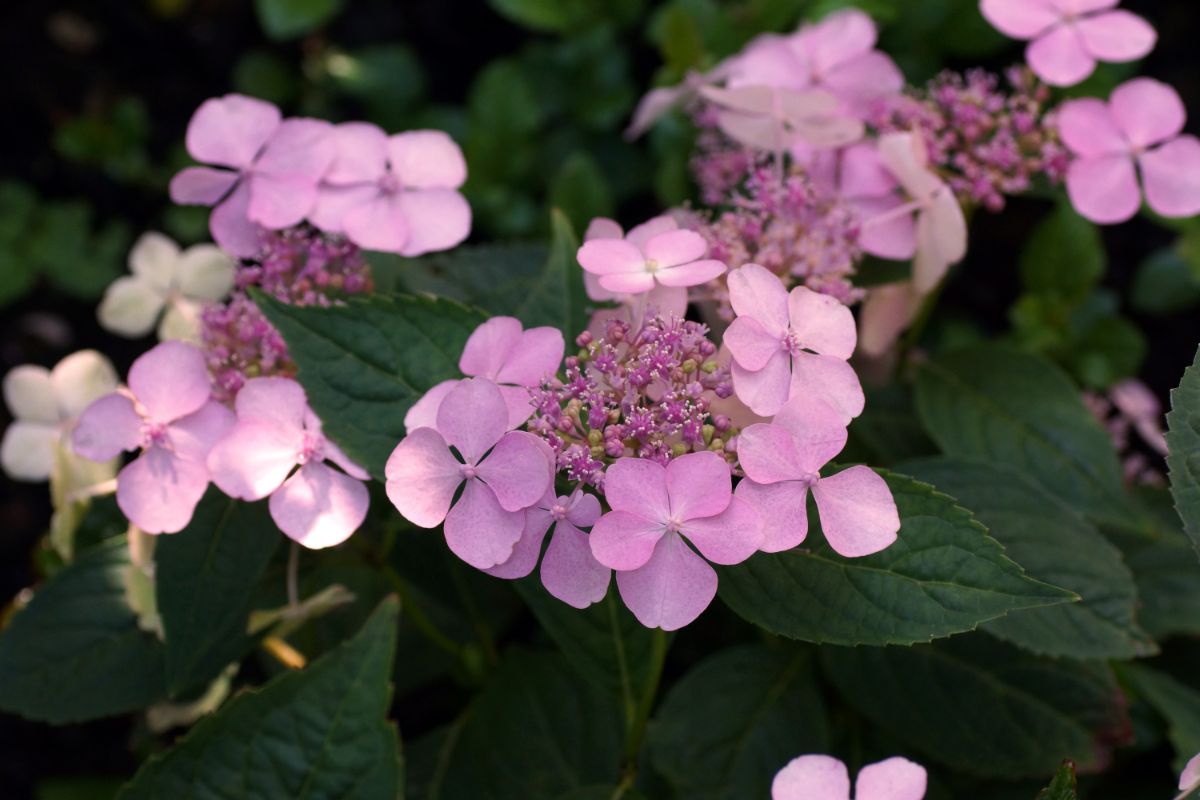
Hydrangeas are a fantastic plant to add to any garden due to their long blooming season and different varieties, which offer varying flower sizes and shapes. Interestingly, some hydrangeas can even be used to climb walls and fences, providing a unique look to your garden. When planting hydrangeas, it is best to do so in the fall as they are hardy shrubs that are less likely to stress from delicate transplants in cooler weather. Ensure that you plant them early enough to establish themselves before colder temperatures arrive. Hydrangeas have long-lasting flowers that bloom during the late summer and early fall seasons, making them ideal for cut flower arrangements or dried displays. Additionally, you can alter the color of hydrangea blooms by changing the soil’s pH – acidic soil produces blue flowers, while alkaline soil creates pink blooms. Overall, hydrangeas are an excellent addition to any garden that offers a variety of colors and shapes.
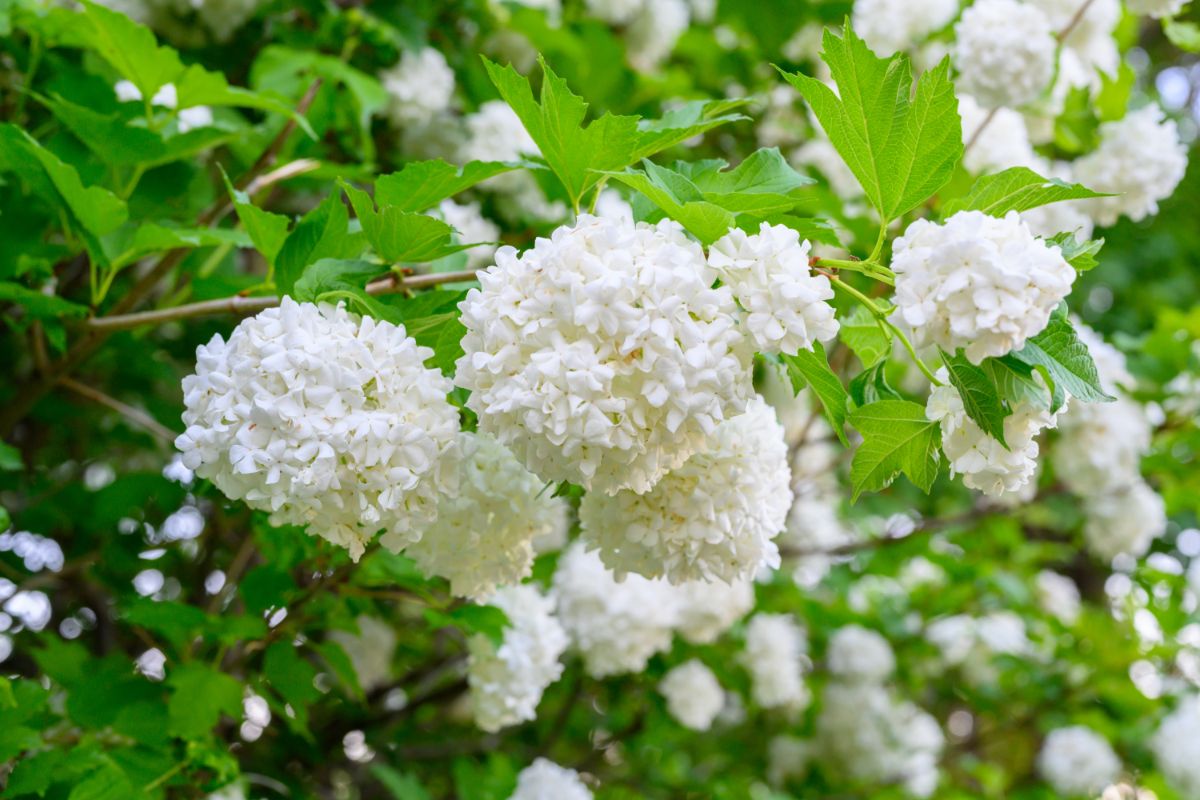
If you want to provide a food source for pollinators come springtime, consider planting viburnum in the fall. These plants can be grown from nursery starts and thrive in full sun to part shade, with some types even preferring full shade. Keep them watered moderately and ensure that they are planted in at least Zone 2.
With over 150 different types of viburnum, there is plenty of variety to choose from. Some are highly scented, while others, like the snowball bush viburnum, produce large clusters of white flowers. Blooming from early spring through June, viburnums are an excellent source of nectar and pollen for pollinators that emerge early in the season.
While viburnums can adapt to different lighting conditions, planting them in full sun will encourage them to produce more flowers and ornamental berries. Another plant to consider for providing a food source for pollinators is lilacs.
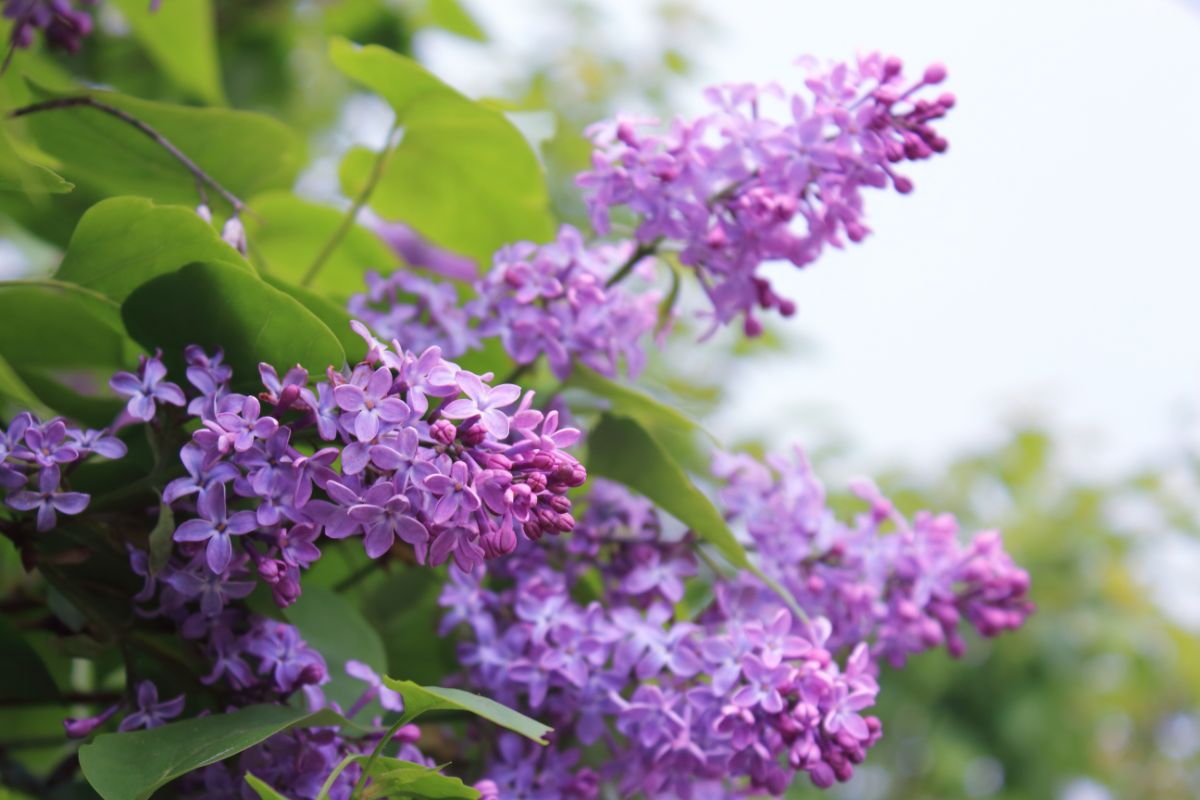
For fragrant spring blooms, consider planting lilacs in the fall! These stunning flowering bushes are often associated with springtime, as they bloom just as temperatures begin to rise and days lengthen. To ensure your plants have enough time to settle in before winter, it’s best to plant lilacs in the fall. New plants will often bloom the following spring, with flowers appearing from April to May and lasting for a few weeks. Lilac flowers typically come in purple or white clusters and are highly fragrant, making them ideal for planting near your front door or back patio. While lilacs can grow to be rather large shrubs, there are dwarf varieties available for those working with smaller spaces. To purchase lilac bulbs, check with your local nursery or gardening center.
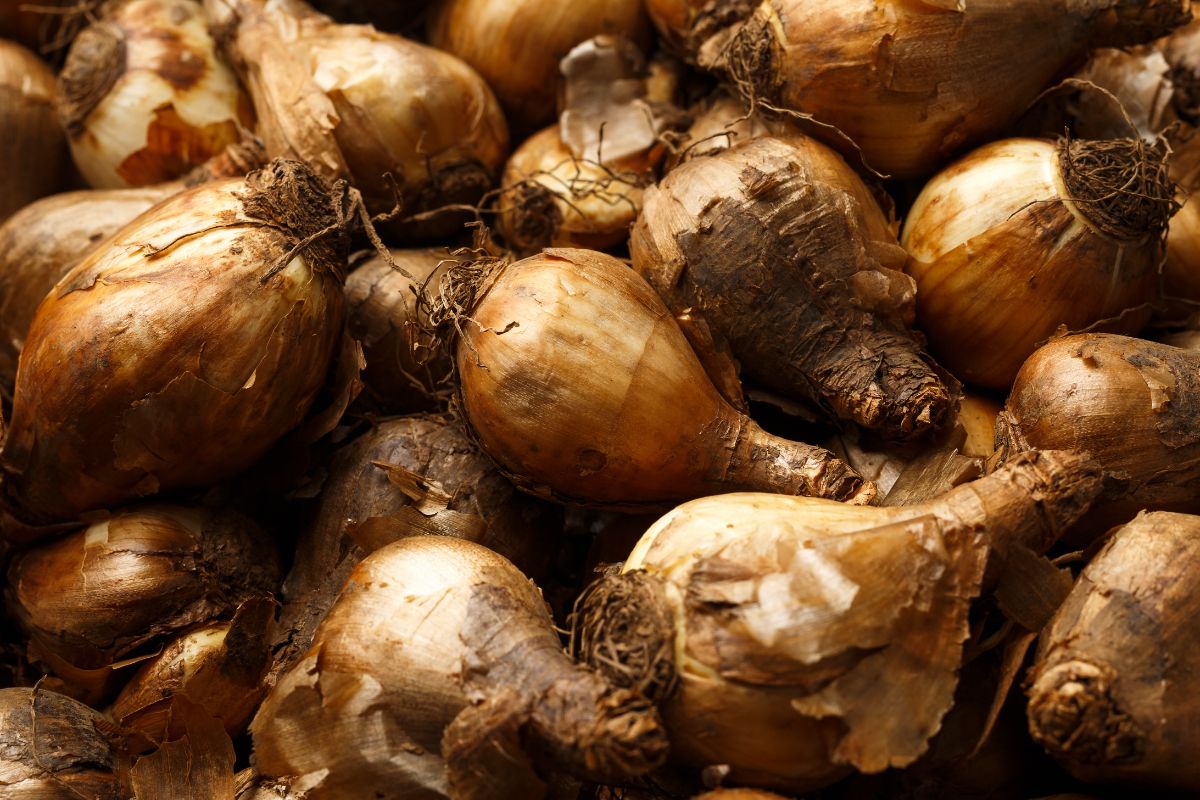
To ensure the success of your plants, it’s important to purchase high-quality bulbs and tubers from reputable sellers. If you plan on planting autumn bulbs, the first step is finding a reliable grower. While garden centers and nurseries carry common varieties like crocuses and daffodils, rarer species can typically be found online. Seed catalogs can be a good starting point, but be mindful of shipping schedules. Some companies sell bulbs year-round, while others only ship during certain periods, such as summer or early autumn. Ordering early is always a good idea, although some companies may only ship during the appropriate planting season. To stay up-to-date on available bulbs, subscribe to seed catalogs and join mailing lists before December or January when catalogs are typically mailed out. Companies like Fedco, Breck’s, and Eden Brothers offer an extensive selection of both common and hard-to-find species. Additionally, websites like Etsy and Amazon often carry unique bulbs. As for planting time, it varies depending on the species, so be sure to research the specific requirements of the bulbs you purchase.
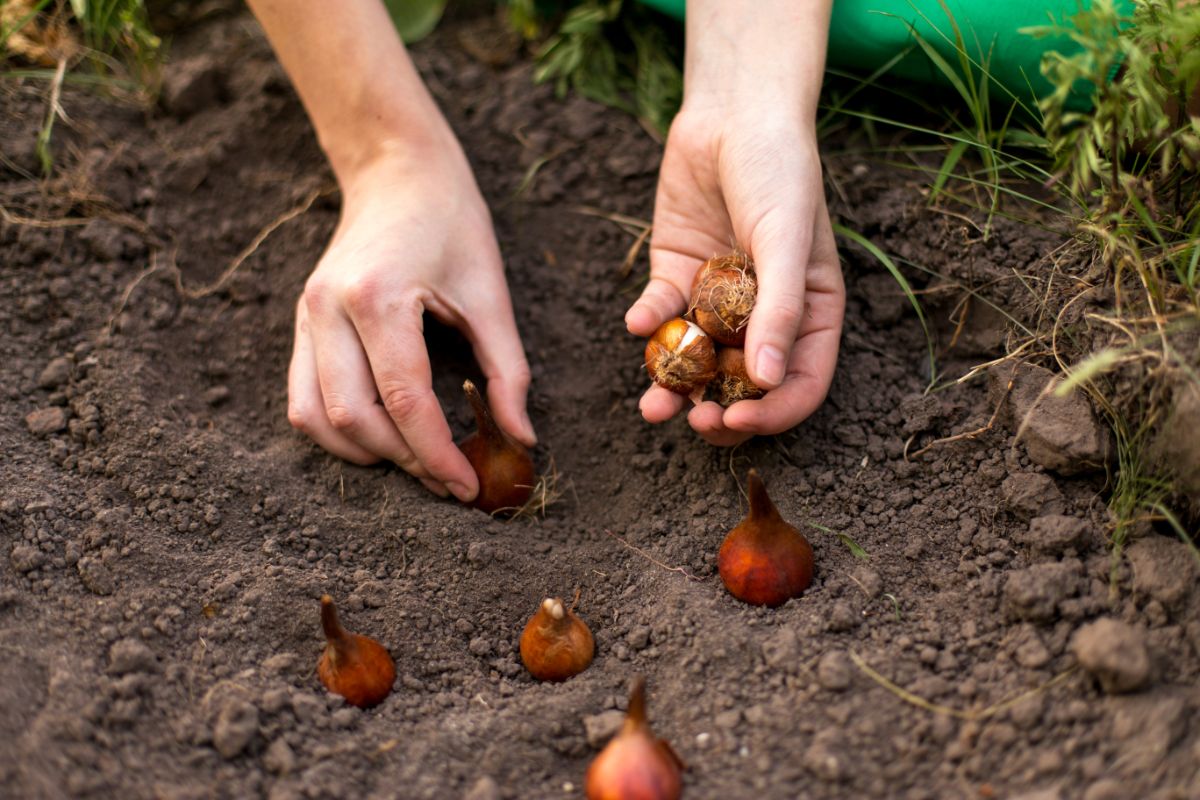
Timing is key when it comes to planting fall bulbs for a successful spring bloom. It is crucial to give your bulbs enough time to establish roots before winter sets in, ensuring their strength and survival through the season. Start by reading the planting instructions provided with your bulbs, paying attention to details such as planting time, hole depth, and spacing requirements. Most instructions will recommend planting bulbs several weeks before the first frost date, so research your region’s frost dates and growing zone to determine the best time to plant. For most growing zones, the ideal time is around October, while warmer areas may need to wait until November or later. Remember, different bulbs have different sowing times, so consult the instructions for each variety. Be sure not to plant bulbs too early, as they may use valuable energy needed for the winter months. With these tips in mind, you’ll be on your way to a beautiful spring garden in no time! To find your region’s frost dates, do some research or consult a gardening expert.

To ensure a successful planting in your garden, it is important to know the first and last frost dates for your region. Understanding these dates will help you determine which plants can thrive as perennials and when to plant bulbs and flowers. One convenient way of learning your frost dates is by visiting the Old Farmer’s Almanac website, which provides this information and the length of your growing season once you input your zip code. Knowing your first frost date will enable you to calculate the ideal time to begin planting your bulbs. If you prefer using books, the Old Farmer’s Almanac also offers an annual printed guide containing valuable gardening tips and information about your growing region. With this knowledge, you can confidently plant your autumn bulbs and ensure a flourishing garden.
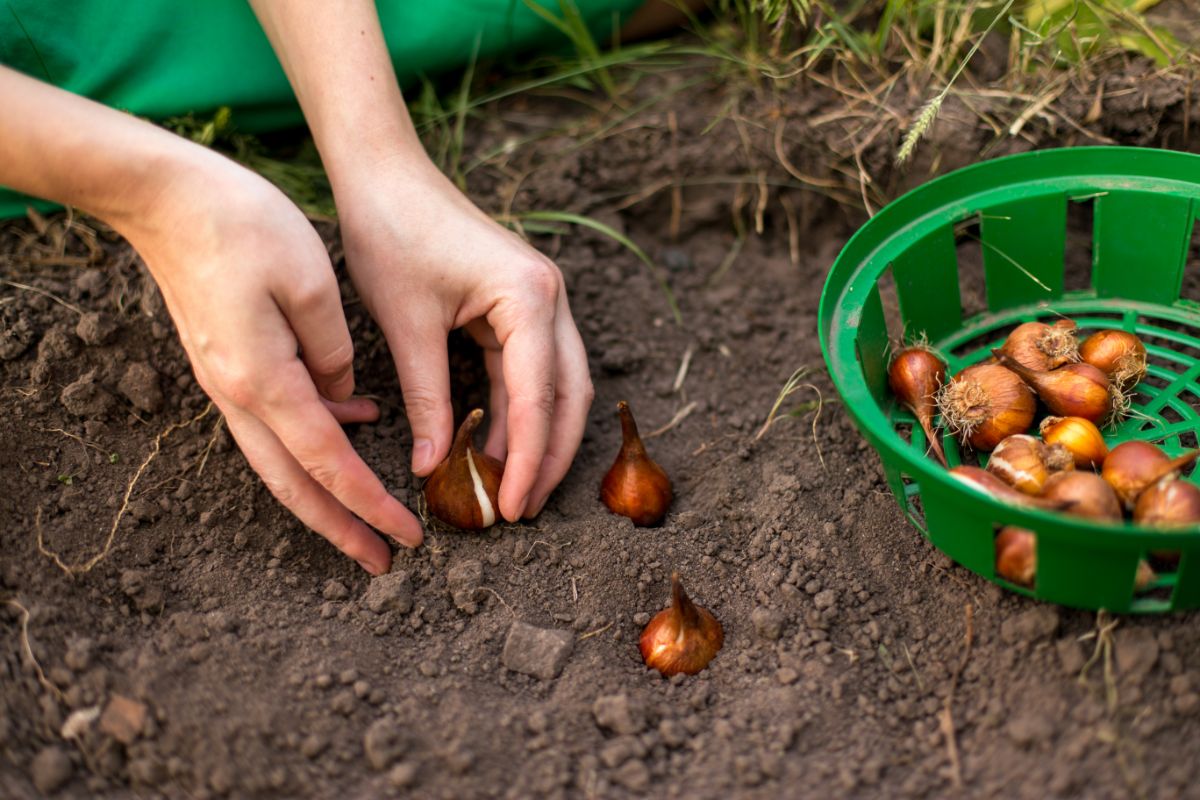
Before planting your flower bulbs, check them over for any signs of damage or rot. Store them in a cool, dry location to prevent sprouting and ensure they don’t freeze. When it’s time to plant, follow the recommended planting depths and instructions provided by the grower. Consider using handheld bulb planters or the ProPlugger for easy and efficient planting. Rather than using bone meal, amend your soil with aged compost or worm castings to give your plants a nutrient boost. With these tips, your flower bulbs are sure to thrive and provide a beautiful display come springtime.
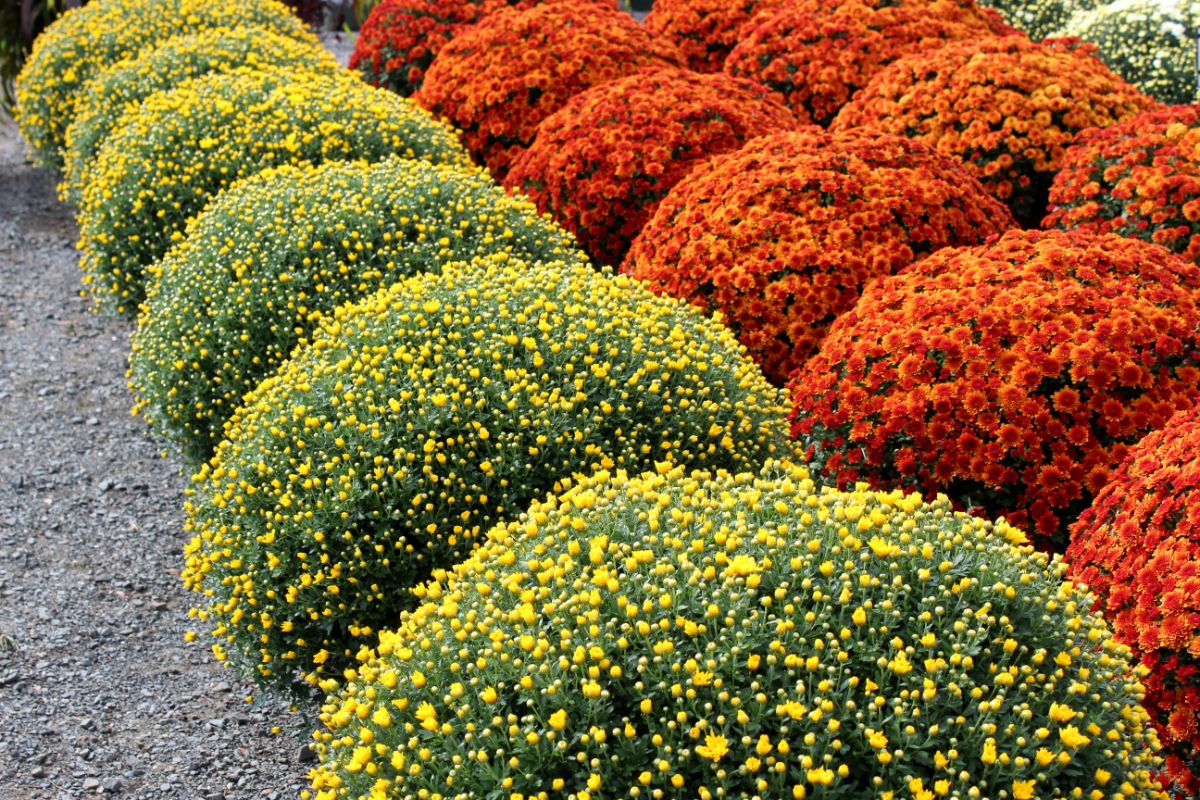
Autumn is a prime season for planting and gardening. With the craziness of summer gardening slowing down, it’s easier to find time to do some fall planting. If you missed the opportunity to garden during spring and summer, don’t worry, fall is still a great time to get creative and plan for the future. You can divide perennials, reshape beds, or add new plants to give your garden a fresh look. To spice up your garden this fall, try out some new flowers like mums that bloom this season, adding a splash of color when other early-bloomers are fading. Don’t hesitate to experiment with different options like bulbs and long-lasting shrubs best sown in autumn to ensure they’re ready for the spring blooming season. Whether it’s creating a tulip bed or a temporary autumnal planter, any flowers you plant this fall will enrich your garden space in tangible ways. The possibilities are endless, so order some bulbs, try something new, and experiment with some flowering bushes. As a gardener, the work is never done, but the rewarding feeling it brings makes it all worth it!





